

Chicago 17th Edition Citation Guide
- General Chicago Style Guidelines
- Word Template
- Book Examples
- Article Examples
- Multimedia Examples
- Personal Communication, Interview Examples, and Lectures
Legal, Public and Unpublished Materials
- Bluebook Citation for Legal Materials
- Reference Works, and Ancient, Sacred, Medieval, or Classic Texts
General Guidelines for Public and Unpublished Materials
(“General Guidelines for Public and Unpublished Materials.” The Purdue OWL. https://owl.english.purdue.edu/owl/resource/717/02/.)
Notes and bibliographic entries for public documents, like other documents, should include the elements needed to locate the items. These essential elements often include the following:
- Country, city, state, province, county, etc.
- Legislative body, executive department, court, bureau, board commission or committee, etc.
- Subsidiary divisions
- Title, if any, of the document or collection
- Individual author (editor or compiler), if given
- Report number or any other identification necessary or useful in finding the specific document
- Publisher, if different from issuing body
Footnote or Endnote (N):
1. Firstname Lastname, “Title of Document” (source type identifier, Place of Publication, year of publication) , page number(s).
Corresponding Bibliographic Entry (B):
Lastname, Firstname. “Title of Document.” Source type identifier, Place of Publication, year of publication.
Legal Materials and Government Documents
Legal materials and other government documents should be cited using footnotes, endnotes, and/or citation sentences (with clauses including the same information required in a footnote). Print copies of the sources tend to be preferred to digital, though verified digital sources are acceptable.
When writing for law journals or other legal publications, these sources are not usually required to be cited in a bibliography or on a references page. Citation sentences alone are an acceptable form of citation, so long as the document has only a few legal citations (for more information, see The Chicago Manual of Style, 17th ed., sections 14.269-305 and 15.58.)
Court Decisions and Cases
Notes for court cases should include Case Name (formatted as Name of one party v. Name of the other party), number, volume number, abbreviated name(s) of reporter, and, in parentheses, the abbreviated name of the court and the date . Relevant information may follow.
Case names written in full are typeset in roman, while in subsequent shortened citations the short form of the case name is italicized . Citations are assumed to refer to decisions as a whole unless a particular page is cited using “at” (see example 3 below). The CMOS offers the following note examples in section 14.276:
United States v. Christmas, 222 F.3d 141, 145 4th Cir. (2000).
Profit Sharing Plan v. Mbank Dallas, N.A., 683 F. Supp. 592 (N.D. Tex. 1988).
Christmas, 222 F.3d at 145. The court also noted that under United States v. Sokolow, 490 U.S. 1, 7 (1989), police may briefly detain a person without probable cause if the officer believes criminal activity “may be afoot.” Christmas, 222 F.3d at 143; see also Terry v. Ohio, 392 U.S. 1 (1968).
Theses and Dissertations
Thesis and dissertation titles appear in quotation marks, not in italics, but are cited in all other ways like books. Include name, title, type of document, academic institution, and date, in that order. If the item was found online, include a URL or DOI (see websources tab)
1. Tara Hostetler, “Bodies at War: Bacteriology and the Carrier Narratives of ‘Typhoid Mary’” (master’s thesis, Florida State University, 2007), 15-16.
Hostetler, Tara. "Bodies at War: Bacteriology and the Carrier Narratives of ‘Typhoid Mary.’” Master’s thesis, Florida State University, 2007.
Letters and Unpublished Manuscripts
Letters and unpublished materials that have not been archived may be cited like other unpublished material, with information on location replaced by wording such as “private collection of Trinity Overmyer” or “in the author’s possession.” The location is not mentioned.
- << Previous: Personal Communication, Interview Examples, and Lectures
- Next: Bluebook Citation for Legal Materials >>
- Last Updated: Nov 27, 2023 4:02 PM
- URL: https://cccs.libguides.com/c.php?g=1318336
Chicago 17th edition notes and bibliography
- Introduction
- Author, title, date
- Book chapter
- ChatGPT and other generative AI tools
- Journal article
- Social Media
- Ancient sources
- Book review
- Dictionary or encyclopaedia
- Personal communication
- Newspaper or magazine articles
Citing manuscripts
Archival material.
- Conference papers
- Legal materials
Titles of unpublished manuscripts, like the titles of other unpublished works, appear in quotation marks. Include the words unpublished manuscript and the date of the version consulted, if known; for electronic files, a last-saved or last-modified date may be appropriate. End the citation with an indication of format.
See this guide for referencing materials from the Fryer Library.
- << Previous: Newspaper or magazine articles
- Next: Conference papers >>
- Last Updated: Mar 26, 2024 1:29 PM
- URL: https://guides.library.uq.edu.au/referencing/chicago17-notes-bibliography
Research Guides
Gould library, how to cite your sources.
- Tools and Handbooks
Chicago Quick Guides!
Video examples of chicago manual of style, citing other publication types.
- Citing Government Documents
- Citing Rare Books
- Citing Archival Material
- Image Credits and Captions
- Informal Attribution
Style Guides
What does an Annotated Bibliography look like?
- Chicago Manual of Style annotated bibliography example Remember that your annotated bibliographies are not simply lists. They are creative, rhetorical devices that map out the scholarly conversation on a topic.

More Videos on Chicago
- Chicago Style - Books (Video)
- Chicago Style - Journals (Video)
- Chicago Style - Websites & Social Media (Video)
- Notes & Bibliography
- Author-Date
(N) = footnote or endnote style ; (B) = Bibliography style
Your bibliography should be alphabetized by author last name. For works that do not have an author, alphabetize by item title (omitting articles like "a" or "the"). Your bibliography should also be formatted using Hanging Indents .
Newspaper Article/Newspapers
(N) "Shipping News," New York Herald , December 4, 1868, Readex America's Historical Newspapers.
(B) The New York Herald, 1868-1878.
(B) The Ohio State Journal (Columbus, Ohio) April 1-20, 1900.
- See: 14.191: Basic citation format for newspaper articles
- Newspapers are more commonly cited in notes or parenthetical references than in bibliographies.
- An example from the Carleton History Department on how to cite a newspaper in a bibliography (if needed)
(N) 1. “Balkan Romani,” Endangered Languages, Alliance for Linguistic Diversity, accessed September 2, 2022, https://web.archive.org/web/20220822122125/https://www.endangeredlanguages.com/lang/5342.
- See 14.207: Citing web pages and websites for other options : Include a publication date or date of revision or modification if possible; else, access date
- See 14.10: Short forms for URLs for help with long, weird URLs
- You may also choose to cite to the Internet Archive instead of the live website
Images and Art
(N) 1. Michelangelo Buonarroti, The Slave , 1513-15, marble, 2.09 m., Paris, The Louvre.
(B) Buonarroti, Michelangelo. The Slave , 1513-15. Marble, 2.09 m. Paris, The Louvre.
- See: 14.235: Citing paintings, photographs, and sculpture
- See: Best practices for Creative Commons attribution
If citing images found in published works or online collections, cite them similarly to book chapters, articles, or web pages within website, with the artist in the author position and the image title in the chapter title, article title, or webpage title position.
Data Sets & DH Projects
(N) 1. Creator, Title (Place: Publisher, Year), link.
(B) Creator. Title. Place: Publisher, Year. link.
(N) 1. The World Bank. Washington Development Indicators . (Washington, D.C.: The World Bank, 2012). http://data.worldbank.org/data-catalog/world-development-indicators.
(B) The World Bank. World Development Indicators . Washington, D.C.: The World Bank, 2012. http://data.worldbank.org/data-catalog/world-development-indicators.
- See: Example of how to cite different parts of a digital humanities project
Primary Sources in a Republished Source
When possible, always find and cite the original. If this is absolutely impossible, you may need to cite a primary source that is republished in a secondary source.
Follow whatever citation rules apply to your specific item type; for instance, because this example is a newspaper article, there's only a short bibliography entry. If this were a different item type, the bibliography entry might look different.
(N) 1. [Complete citation for the older/original item; see Archival Citations or above for help], quoted in [Complete citation for newer/secondary source; see above for help], page #, URL/doi.
(B) [Complete citation for the older/original item; see Archival Citations or above for help]. Quoted in [Complete citation for newer/secondary source; see above for help]. URL/doi.
(N) 1. Itthi, "Love Problems of the Third Sex -- Solved by Go Pakhnam" [in Thai], Plaek , July 7, 1976, quoted in Peter A. Jackson, First Queer Voices from Thailand: Uncle Go’s Advice Columns for Gays, Lesbians and Kathoeys (Hong Kong: Hong Kong University Press, 2016), 196-197, https://www.jstor.org/stable/j.ctt1bj4sqf .
(B) Plaek . July 7, 1976. Quoted in Peter A. Jackson. First Queer Voices from Thailand: Uncle Go’s Advice Columns for Gays, Lesbians and Kathoeys. Hong Kong: Hong Kong University Press, 2016. https://www.jstor.org/stable/j.ctt1bj4sqf .
- See: 14.260: Citations taken from secondary sources
- See: Citing Primary Sources Published in Edited Collections (Trent University)
If citing images or art that stand alone:
Buonarroti, Michelangelo. 1513-15. The Slav e. Marble, 2.09 m. Paris, The Louvre.
Creator. Year. Title . Place: Publisher. link
The World Bank. 2012. World Development Indicators . Washington, D.C.: The World Bank. http://data.worldbank.org/data-catalog/world-development-indicators.
Lastname, Firstname. Year. Title . Performed by Firstname Lastname. Place: Studio. Format.
Wong, John. 1999. Cool People at the Libe. Directed by Cat Toff. Northfield: Gould Libe. DVD.
- << Previous: APA Style
- Next: Special Formats >>
- Last Updated: Mar 26, 2024 11:53 AM
- URL: https://gouldguides.carleton.edu/citation
Questions? Contact [email protected]

Powered by Springshare.
Purdue Online Writing Lab Purdue OWL® College of Liberal Arts
Miscellaneous Sources

Welcome to the Purdue OWL
This page is brought to you by the OWL at Purdue University. When printing this page, you must include the entire legal notice.
Copyright ©1995-2018 by The Writing Lab & The OWL at Purdue and Purdue University. All rights reserved. This material may not be published, reproduced, broadcast, rewritten, or redistributed without permission. Use of this site constitutes acceptance of our terms and conditions of fair use.
This section contains information on The Chicago Manual of Style method of document formatting and citation. These resources follow the seventeenth edition of The Chicago Manual of Style , which was issued in 2017.
This page covers types of media you may want to cite that don’t properly fit into any of the previous pages. If you are attempting to cite a source that you can find neither on this page nor any of the others in the Chicago section, consult the CMOS or model your citation on the example that most closely resembles your source.
This entry covers the Chicago Manual of Style guidelines for citing lectures, papers presented at meetings or poster sessions, and other similar presentations. Such entries often include the sponsorship, location, and date of the meeting following the title. When such texts are published, they should be treated like a chapter in a book or article in a journal. If the material is available online, include a URL at the end of your citation. The model is as follows:
Note that not all lectures have titles – if you are, for instance, citing a lecture given by a professor to his class, there may be no title to provide. In this case, feel free to skip that portion of the citation.
Visual Arts
This entry can be applied to paintings, sculptures, and all forms of visual art. (Music and other performing arts are covered under LINK:“Audiovisual Recordings and Other Multimedia.”) As usual, these must be cited with title, creator, and date as available, but the nature of these sources requires that you also provide medium, dimensions, and physical location, as follows:
There is some flexibility in portions of this citation. “Date” can be as simple as the year the piece of art was completed; it can be specific enough to include a season, month, or even a day. There might also be complications to acknowledge. In analog photography, for example, the date the photo was taken and the day it was developed into the print you are referencing are probably different; you might acknowledge that with something like “Spring 2013, printed 2018.” You may also have to give a date range if the specific year is unknown. “Location” might be a museum where it is on display, a private collection, or a publication in which it is reproduced; though, if possible, you should always cite the original rather than a reproduction.
You may find “Dimensions” unfamiliar, but most museums and the like will provide you with the medium and dimensions as part of the display or their website; these are standard attributes by which artwork is catalogued. Note that, when dealing with two-dimensional pieces such as paintings or photographs, you will use only height and width; “height” refers to the vertical dimension when the painting is hung on the wall in its correct orientation. Three-dimensional pieces will also include “depth.” Note that it is encouraged to provide dimensions in both imperial and metric units – use whichever the displaying institution gives, then follow it with a conversion in parentheses.
If images of the piece are available online, you should provide a URL at the end of your citation.
Ancient, Sacred, Medieval, or Classic Texts
Some texts have been reprinted and re-translated so often over the centuries that conventional citations are counterproductive. If, for instance, you cited page 73 of Beowulf, your reader may be unable to find that reference – there are dozens of different translations and editions out there, very few of which share pagination. Even if you specify the edition, that may frustrate readers who have other editions. However, nearly all editions of Beowulf have the same line-numbering system, so citing line 2145 will be accessible to everyone. This same concept, on a larger scale, is what we call “classical citation”.
Classical citation applies only to old, widely-circulated texts with many varied editions. In classical citation, rather than follow page number, you simply follow whatever organizational scheme the author set up, as well as a line number for poetic works. This is used only in note citations – in the bibliography, you are expected to cite the book as normal, so that all the information on your specific edition is provided. The format is extremely simple, and goes as follows:
It is considerate to your reader to specify the edition, translator, numbering system, or any other relevant information in the very first note citation:
Note that you should only include those details if they’re relevant – it is rare, for instance, that there are competing numbering systems that would require you to specify whose you are using. Often the editor is the translator, and therefore does not need to be cited twice. In all subsequent note citations, use only the brief classical citation.
The numbers by which you cite a specific passage in one of these texts vary depending on the type of text you are using. For an epic poem, you should use “book.line”; for classic plays, you should use “act.scene.line.”; for many medieval and classical texts, you should use “book.chapter.section”, if all three are provided. Some texts, like Plato’s or Aristotle’s works, have their own specialized numbering systems. Prose texts that were not divided into chapters and sections by the author are often just cited by paragraph number. Sacred texts generally use colons instead of periods and cite “chapter:verse” – however, if you are citing a sacred text from any religion you are not intimately familiar with, you should check and see what system the adherents of that religion have developed for their text, or at least follow conventions set down by authoritative scholarship.
There are a few additional quirks in classical citation. For instance, if you are citing the Bible, you must specify which version you are using in every note citation, due to the wide variation from one to another. Many classical texts and authors have official abbreviations you can use if you want to shorten your citations still further – the catalog of these abbreviations is maintained by the Oxford Classical Dictionary . If you feel it is necessary, you can also include labels such as “bk.”, “para.”, “line”, “chap.”, and so forth in the first note, in which case you would write it more like this:
The following examples cover a range of different types of texts that commonly use classical citation.
Reference Works
This entry covers publications such as dictionaries, encyclopediae, style guides, and the like. There are a few relevant differences between citing these works and a regular book; all of these differences apply to the note form, not the bibliography form, however, so we will only have examples in note format. Other than the differences noted below, you may cite reference works as you would any other publication of that medium.
First, any such work that is organized into sections will be cited by said sections, rather than by page number, like the classical works above:
Works organized into entries, such as dictionaries, will be cited by entry. However, rather than treat them like a chapter or section in a standard book, you treat them like a page number. This is marked by the abbreviation s.v., which stands for sub verbo, ‘under the word’. If your citation refers to multiple entries, indicate this by typing s.vv. instead, then listing the entries. Note that the s.v. is placed at the very end for print sources, but for online sources, it is followed by the “last modified”date and the URL.
Particularly well-known and reliable reference works, such as the Oxford English Dictionary, need not appear in the bibliography at all, but can be cited only in the notes. These citations only require the name of the work, the edition/year, and the entry in question:

- University Library
How do I cite an unpublished material (e.g. diary) in Chicago Style?
- FiNDit Support
- Have Your Say
- Library Announcements
- Student Wellbeing
- University FAQs
- 60 Academic support
- 25 Access issues
- 32 Blackboard
- 71 Borrowing
- 23 Copyright
- 50 Databases
- 86 Finding information
- 85 IT Services
- 45 My Library
- 26 Print/copy/scan
- 34 Reading Lists
- 190 Referencing
- 15 Refworks
- 18 Research support
Answered By: Events Calendar Last Updated: Feb 23, 2022 Views: 16473
Chicago Manual of Style (CMOS) 14.221:
Full identification of most unpublished material usually requires giving the title and date of the item, series title (if applicable), name of the collection, and name of the depository. Except for placing the cited item first [in a note], there is no general agreement on the sequence of the remaining elements in the citation. Whatever sequence is adopted, however, should be used consistently throughout the same work.
Citations of collections consulted online will usually take the same form as citations of physical collections, aside from the addition of a URL or database name.
Elements of footnote:
Title of cited item, format (e.g. original manuscript, digital reproduction of original manuscript, transcript), date of item (unless clear from the title), box number (if applicable), name of the collection (if applicable), name of the depository.
(Include the page number if the source has page numbers, e.g. the transcript, the pdf version of the original – see examples below.)
Elements of bibliography:
Title of item cited. Format. Date of item (unless clear from the title). Name of collection (if applicable). Name of depository.
Note: don’t use italics for the title in either the footnote or bibliography.
Footnote examples:
2. Mary Ann Friend Journal Typescript, n.d., State Library of Western Australia, 19, https://www.slwa.wa.gov.au/sites/default/files/MaryAnnefriendtypescript.pdf.
3. Mary Ann Friend's Journal of a Voyage to Hobart with Account of the Settlement on the Swan River, 1829-1831, digital reproduction of original manuscript, State Library of Western Australia, 34, https://www.slwa.wa.gov.au/sites/default/files/MaryAnnFriendDiary.pdf.
Short form footnote examples:
6. Journal Typescript, 20.
7. Mary Ann Friend's Journal, digital reproduction, 35.
Bibliography examples:
Mary Ann Friend Journal Typescript. n.d. State Library of Western Australia. https://www.slwa.wa.gov.au/sites/default/files/MaryAnnefriendtypescript.pdf.
Mary Ann Friend's Journal of a Voyage to Hobart with Account of the Settlement on the Swan River, 1829-1831. Digital reproduction of original manuscript. State Library of Western Australia. https://www.slwa.wa.gov.au/sites/default/files/MaryAnnFriendDiary.pdf.
Links & Files
- Chicago 17 - Manuscripts 14.221
- Share on Facebook
Was this helpful? Yes 3 No 10
Comments (0)

- Collections
- Research Help
- Teaching & Learning
- Library Home
Chicago Citation Style Guide
- Get Started With Chicago Style
- Note-Bibliography Basics
- Author-Date Basics
- Citing Journal Articles
- Citing Newspaper Articles
- Citing Magazines
- Citing Websites & Blogs
- Sound Recordings
- Radio Program (Podcast)
- Broadcast Radio & TV
- Video Recordings (DVD/VHS)
- TV & Video (Web)
- Images & Art
- Reference Materials
- Religious Texts
- Legal & Government Documents
Theses & Dissertations
Citing a published thesis, citing an unpublished thesis, citing a thesis in online database or repository.
- CMS 14.224: Theses and dissertations
Titles of unpublished works appear in "quotation marks"—not in italics . This treatment extends to theses and dissertations, which are otherwise cited like books.
The kind of thesis, the academic institution, and the date follow the title. Like the publication data of a book, these are enclosed in parentheses in a note but not in a bibliography.
If the document was consulted online, include a URL or, for documents retrieved from a commercial database, give the name of the database and, in parentheses, any identification number supplied or recommended by the database.
For dissertations issued on microfilm, see 14.120 . For published abstracts of dissertations, see 14.197 .
Note-Bibliography
First-name Last-name, "Title of Thesis: Subtitle," (Publisher, Year).
Mihwa Choi, “Contesting Imaginaires in Death Rituals during the Northern Song Dynasty,” PhD diss., (University of Chicago, 2008).
Short Note:
Last-name, "Title of Thesis."
Choi. “Contesting Imaginaires ."
Bibliography Entry:
Last-name, First-name. "Title of Thesis: Subtitle." Year.
Choi, Mihwa. “Contesting Imaginaires in Death Rituals during the Northern Song Dynasty.” PhD diss. University of Chicago, 2008.
Author-Date
Text Citation:
(Last-name Year)
(Mihwa 2008)
Reference Entry:
Last-name, First-name. Year. "Title of Thesis: Subtitle."
Choi, Mihwa. 2008. “Contesting Imaginaires in Death Rituals during the Northern Song Dynasty.” PhD diss. University of Chicago.
Note -Bibliography
Note #. First-name Last-name, "Title of Thesis: Subtitle," Unpublished thesis type, University. Year.
Barry C. Hosking, "The Control of Gastro-intestinal Nematodes in Sheep with the Amino-acetonitrile Derivative, Monepantel with a Particular Focus on Australia and New Zealand," PhD diss., (Ghent University, 2010).
Note #. Last-name,"Title of Thesis."
Barry C. Hosking, "The Control of Gastro-intestinal Nematodes."
Bibliography:
Last-name, First-name. "Title of Thesis: Subtitle." Unpublished thesis type. University. Year.
Hosking, Barry C. "The Control of Gastro-intestinal Nematodes in Sheep with the Amino-acetonitrile Derivative, Monepantel with a Particular Focus on Australia and New Zealand." PhD diss., Ghent University, 2010.
(Hosking 2010)
Last-name, First-name. Year. "Title of Thesis: Subtitle." Unpublished thesis type. University.
Hosking, Barry C. 2010. "The Control of Gastro-intestinal Nematodes in Sheep with the Amino-acetonitrile Derivative, Monepantel with a Particular Focus on Australia and New Zealand." PhD diss., Ghent University.
Note #. First-name Last-name, "Title of Thesis: Subtitle," Database Name (Identifier if given), Year, Internet address.
12. Meredith Stewart, "An Investigation into Aspects of the Replication of Jembrana Disease Virus, " Australasian Digital Theses Program (WMU2005.1222), 2005, http://wwwlib.murdoch.edu.au/adt/browse/view/adt-MU20051222.104106.
Note #. Last-name, "Title of Thesis."
21. Stewart, "An Investigation into Aspects."
Last-name, First-name. "Title of Thesis: Subtitle." Database Name (Identifier if given), Year. Internet address.
Stewart, Meredith. "An Investigation into Aspects of the Replication of Jembrana Disease Virus ." Australasian Digital Theses Program (WMU2005.1222), 2005. http://wwwlib.murdoch.edu.au/adt/browse/view/adt-MU20051222.104106.
(Stewart 2005)
Last-name, First-name. Year. "Title of Thesis: Subtitle." Database Name (Identifier if given), Internet address.
Stewart, Meredith. 2005. "An Investigation into Aspects of the Replication of Jembrana Disease Virus ." Australasian Digital Theses Program (WMU2005.1222), http://wwwlib.murdoch.edu.au/adt/browse/view/adt-MU20051222.104106.
- << Previous: Legal & Government Documents
- Next: More Help >>
- Last Updated: Feb 13, 2024 2:03 PM
- URL: https://libguides.wvu.edu/chicago
Go to Index
Subscribe to The Chicago Manual of Style Online
Sign up for a free trial
Happy 2024!
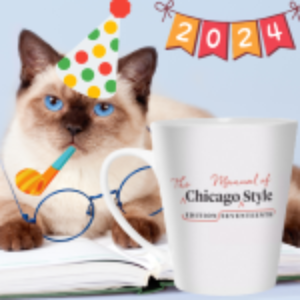
Shop the CMOS Merch Store
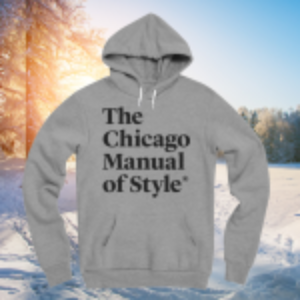
CMOS for PerfectIt Proofreading Software
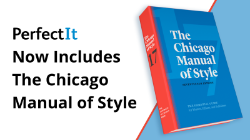
Citation, Documentation of Sources
Q. I can’t seem to find any definitive answer on how to cite occasional papers. These are more than working papers and have a date and place of publication.
A. Any paper with a date and place of publication may follow the usual citation format: author (or organization), title, place, publisher, date. If CMOS doesn’t have an example of your specific type of paper, find something similar and model your citation on it (perhaps at paragraph 14.178 or 14.179 ). A published title of a stand-alone occasional paper is italicized; titles of unpublished papers are quoted. Don’t worry about a “definitive answer”—the main thing is to include the information that will document your source and help readers find it.
The CMOS Shop Talk Blog

CMOS editors share writing tips, editing ideas, interviews, quizzes, and more!
NEW! Developmental Editing, Second Edition, by Scott Norton
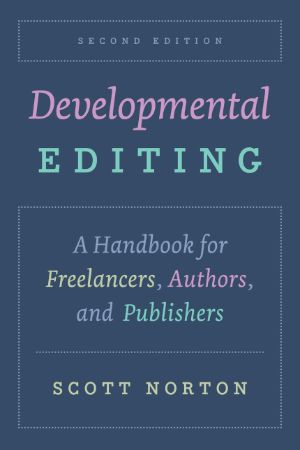
Available for Preorder! The CSE Manual: Scientific Style and Format, Ninth Edition
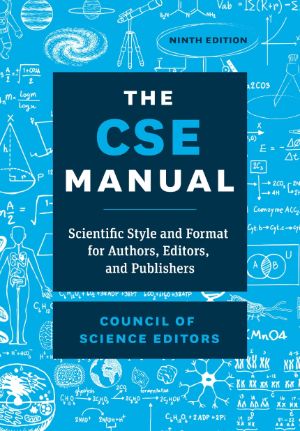
The Chicago Guide to Fact-Checking, Second Edition, by Brooke Borel
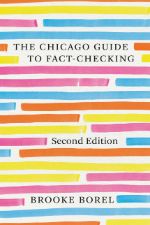
The Chicago Guide to Copyediting Fiction, by Amy J. Schneider
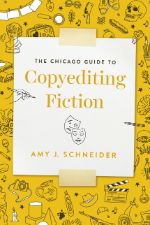
Retro Chic(ago)
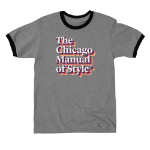%20Disco.png)
Visit the CMOS Bookstore
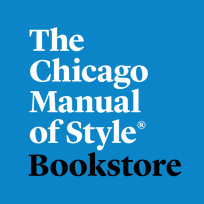
Charitable Giving Helps Advance Our Mission
Books for students, writers, and editors.


Chicago Citation Style (17th Edition): Pamphlets, Brochures, and Reports
- General Guidelines
- One Author or Editor
- Two or Three Authors or Editors
- More Than Three Authors or Editors
- Chapter or Article in a Multi-Author Book
- Chapter or Article in a Multi-Volume Work
- Organization as Author
- Reference Book
- Edition Other than the First
- Basic Journal Article
- Journal Article from an Online Periodical
- Journal Article from Database
- Magazine Article
- Magazine Article from an Online Magazine
- Newspaper Article
- Newspaper Article from an Online Newspaper
- Basic Web Page
- Government Publication
- Motion Picture (Video Recording)
- Online Multimedia
- Image from an Electronic Source
- Published Photograph
- Interviews & Personal Communications
- Pamphlets, Brochures, and Reports
- Scriptural References
- Secondary Sources
- Government Publications
- Ask for Help
Pamphlets, Brochures, and Reports (p. 756)
These types of sources are basically treated like books.
General Format
1. Author First Name/Initial Surname, Title: Subtitle (Place of Publication: Publisher, Year), page #(if there is one).
Concise Note:
2. Author Surname, Title , page # (if there is one).
Bibliography:
Author Surname, First Name or Initial. Title: Subtitle . Place of Publication: Publisher, Year.
1. Hazel V. Clark, Mesopotamia: Between Two Rivers (Mesopotamia, OH: End of the Commons General Store, 1957).
2. Clark, Mesopotamia.
Clark, Hazel V. Mesopotamia: Between Two Rivers . Mesopotamia, OH: End of the Commons General Store, 1957.
Formatting of papers in Chicago Style:

Citations and bibliographies in Chicago Style:

About Citing Other Sources
This guide is intended to cover only the Notes and Bibliography system for citing sources.
For each type of source in this guide, both the general form and a specific example will be provided.
The following format will be used:
Full Note - use the first time that you cite a source. Concise Note - use after the first time you cite a source. Bibliography - use when you are compiling the Bibliography that appears at the end of your paper.
Information on citing and several of the examples were drawn from The Chicago Manual of Style (17th ed.) .
Numbers in parentheses refer to specific sections and pages in the manual.
- << Previous: Lecture
- Next: Scriptural References >>
- Last Updated: Jul 10, 2023 12:20 PM
- URL: https://libguides.westsoundacademy.org/chicago-citation

- [email protected]
- Shapiro Library
- SNHU Library Frequently Asked Questions
FAQ: How should I cite my own work?
- 7 Academic Integrity & Plagiarism
- 63 Academic Support, Writing Help, & Presentation Help
- 27 Access/Remote Access
- 7 Accessibility
- 9 Building/Facilities
- 7 Career/Job Information
- 26 Catalog/Print Books
- 26 Circulation
- 128 Citing Sources
- 14 Copyright
- 310 Databases
- 24 Directions/Location
- 18 Faculty Resources/Needs
- 7 Hours/Contacts
- 2 Innovation Lab & Makerspace/3D Printing
- 25 Interlibrary Loan
- 43 IT/Computer/Printing Support
- 3 Library Instruction
- 37 Library Technology Help
- 6 Multimedia
- 17 Online Programs
- 20 Periodicals
- 25 Policies
- 8 RefWorks/Citation Managers
- 5 Research Guides (LibGuides)
- 218 Research Help
- 23 University Services
Last Updated: Jun 22, 2023 Views: 194593
If you want to re-use portions of a paper you wrote for a previous assignment or course, you need to take care to avoid self-plagiarism. The APA Manual (7th edition, p. 21) defines self-plagiarism as “the act of presenting one's own previously published work as original." This includes entire papers, and also slightly altered work. Self-plagiarism is a violation of SNHU’s Academic Honesty Policy ( Online Student Academic Integrity Policy This link opens in a new window , Campus Student Academic Integrity Policy This link opens in a new window ). To avoid self-plagiarism, you should request approval from your instructor to use portions of your prior work, and you also need to provide a proper citation within your paper.
If you are citing your own writing from a paper submitted for a previous course, then you would generally cite it as an unpublished manuscript. Here are specific examples of how it works in the three major citation styles:
Please check with your instructor to verify if you can use a previous work as it may violate academic integrity, honor codes, etc. If you are permitted to quote or paraphrase from earlier work, students should cite the work, following the unpublished work template (Section 10.8, p. 336). You can change “Unpublished manuscript” to “Unpublished paper” or another phrase.
Reference Page General Format
Author, A. A. (Year). Title of the work [Unpublished paper]. Department Name, University Name.
Reference Page Example
Fisher, J. D. (2021). This is the title of my paper [Unpublished paper]. English Department, Southern New Hampshire University.
In-Text Example
(Fisher, 2021)
According to the MLA Style site, authors should cite their work the same way they would cite any other source (book, article, etc.). In the text you can refer to yourself (e.g. "In my work...").
Works Cited General Format
Author Last name, Author First Name. "Title of Your Paper: Subtitle of Your Paper." Date. Name of the Course, Institution, Type of Work.
Works Cited Example
Lee, Cody. "My Student Paper: Why I Like This Subject a Lot." 9 Sept. 2021. New Media: Writing and Publishing, Southern New Hampshire University, student paper.
In-Text Citation Example
See the MLA Style pages Citing Your Own Work This link opens in a new window and How do I cite an unpublished student paper? This link opens in a new window for more information.

Chicago Style
Per the Chicago Manual of Style (17th edition), unpublished works such as theses and dissertations are cited like books, with the exception that titles of unpublished works appear in quotations, not italics. Also, the type of paper, the academic institution, and the date follow the title.
For published works, please consult the Chicago Style Table of Contents This link opens in a new window for the type of source and follow the formatting guidelines associated.
Bibliography General Format
Author Last Name, Author First Name. "Title of Paper." Essay, Southern New Hampshire University, Year.
Bibliography Example
Wendell, Richard. "This Is the Title of My Paper." Essay, Southern New Hampshire University, 2021.
Note Example
2. Richard Wendell, "This Is the Title of My Paper" (essay, Southern New Hampshire University, 2021), 4.
More Information
- Citing Your Sources (Shapiro Library) research guide.
Further Help
This information is intended to be a guideline, not expert advice. Please be sure to speak to your professor about the appropriate way to cite sources in your class assignments and projects.
Campus Students
To access Academic Support, visit your Brightspace course and select “Tutoring and Mentoring” from the Academic Support pulldown menu.
Online Students
To access help with citations and more, visit the Academic Support via modules in Brightspace:
- Academic Support Overview: Getting Help with your Schoolwork This link opens in a new window
Content authored by: GS
- Share on Facebook
Was this helpful? Yes 31 No 37
Frequently Asked Questions (FAQs) are a self-serve option for users to search and find answers to their questions.
Use the search box above to type your question to search for an answer or browse existing FAQs by group, topic, etc.
Tell Me More
Link to Question Form
More assistance.
Submit a Question
Related FAQs
FAQ: Research Help
How do i cite an unpublished manuscript.
This article says to cite it as an unpublished paper. My paper is in MLA format
According to the Purdue Online Writing Lab you cite an unpublished paper or manuscript in the following format:
Author. Title of Manuscript/Document. date of composition (at least year), along with "the name and location of the library, research institution, or personal collection housing the material."
For example:
Henderson, George Wylie. Baby Lou and the Angel Bud. Collection of Roslyn Kirkland Allen, New York.
- Citation Help (MLA, Chicago, Zotero, RefWorks etc.)
- Last Updated Aug 01, 2022
- Answered By Lauinger Reference
FAQ Actions
- Share on Facebook
Comments (0)
- Link to facebook
- Link to linkedin
- Link to twitter
- Link to youtube
- Writing Tips
Chicago Referencing – Citing a Conference Paper (Footnotes)
2-minute read
- 22nd August 2018
Conference proceedings are a great resource for students. And since academics attend conferences to discuss cutting-edge research , proceedings often include exciting new ideas.
But how do you cite a conference paper? In this post, we explain this using Chicago footnote referencing.
Footnote Citations
In Chicago referencing, always give full publication information in the first footnote citation . For a published conference paper, this includes:
n. Author’s Name, “Paper Title,” in Title of Proceedings , ed. Editor Name(s) (Place of Publication: Publisher, Year), page number(s) for cited section.
In practice, then, the first citation of a conference paper would look like this:
1. Bill Riker, “Innovations in Seating,” in Proceedings of the Third Annual Behavioral Adaptations for Interstellar Travel Conference , ed. Jonathan Frakes (Santa Monica, CA: TNG Inc., 1987), 184.
The format differs slightly for an unpublished paper (e.g., one that you saw presented in person). This is quite rare, but if you need to cite one, you need to include the following information in the first footnote:
n. Author’s Name, “Paper Title” (paper presented at Name, Location and Date of Conference), page numbers (if relevant).
An unpublished paper would therefore be presented like this:
2. Deanna Troi, “Feeling Change: Design Guided by Empathy” (paper presented at The International Conference of Feeling, UCLA, Los Angeles, California, June 20-22 1992, 21.
Find this useful?
Subscribe to our newsletter and get writing tips from our editors straight to your inbox.
For repeat citations of a paper, you can use a shortened footnote format .
Bibliography
The information to include in your bibliography for a conference paper is roughly the same as in the first footnote. However, there are a few differences. For a published paper, the format is:
Surname, First Name. “Paper Title.” In Title of Proceedings , edited by Editor Name(s), page range. Place of Publication: Publisher, Year.
For an unpublished conference paper, meanwhile, the format is:
Surname, First Name. “Paper Title.” Paper presented at Name, Location and Date of Conference.
In practice, then, we would list a published and an unpublished conference paper as follows:
Riker, Bill. “Innovations in Seating.” In Proceedings of the Third Annual Behavioral Adaptations for Interstellar Travel Conference , edited by Jonathan Frakes, 180-201. Santa Monica, CA: TNG Inc., 1987.
Troi, Deanna. “Feeling Change: Design Guided by Empathy.” Paper presented at The International Conference of Feeling, UCLA, Los Angeles, California, June 20-22 1992.
Share this article:
Post A New Comment
Got content that needs a quick turnaround? Let us polish your work. Explore our editorial business services.
4-minute read
The Benefits of Using an Online Proofreading Service
Proofreading is important to ensure your writing is clear and concise for your readers. Whether...
6 Online AI Presentation Maker Tools
Creating presentations can be time-consuming and frustrating. Trying to construct a visually appealing and informative...
What Is Market Research?
No matter your industry, conducting market research helps you keep up to date with shifting...
8 Press Release Distribution Services for Your Business
In a world where you need to stand out, press releases are key to being...
3-minute read
How to Get a Patent
In the United States, the US Patent and Trademarks Office issues patents. In the United...
The 5 Best Ecommerce Website Design Tools
A visually appealing and user-friendly website is essential for success in today’s competitive ecommerce landscape....

Make sure your writing is the best it can be with our expert English proofreading and editing.
How do I cite an unpublished student paper?
Note: This post relates to content in the eighth edition of the MLA Handbook . For up-to-date guidance, see the ninth edition of the MLA Handbook .
A works-cited-list entry for an unpublished student paper should include the author, title of the paper (in quotation marks), and date. The name of the course, the institution for which the paper was prepared, and the type of work can be provided as optional information at the end of the entry:
Leland, Dina. “Designing websites with Preschool Learners in Mind: Two Approaches Compared.” 4 Sept. 2017. User Experience 101, Dunham College, student paper.
In its publications, it is MLA policy to obtain permission from students before quoting from work they produced for class. Note that this does not extend to MA or PhD theses, which are public-facing works.
Home / Guides / Citation Guides / Chicago Style / How to Cite an Interview in Chicago/Turabian
How to Cite an Interview in Chicago/Turabian
If you are conducting research for a paper or project, interviews can be a great way to get information and quotes directly from the source, whether you are conducting the interview yourself or citing a published interview. This guide will show you how to cite both published and unpublished interviews in notes-bibliography style using the 17th edition of the Chicago Manual of Style .
Guide Overview
- Cite a published interview
- Cite an unpublished interview
- Cite an unattributed or anonymous interview
- Cite personal communications
- What you need
How to Cite a Published Interview
If you are citing an interview published in a periodical (i.e., magazine, newspaper, or journal) or on TV/radio you should follow the citation structure for that type of source. The below example follows the magazine citation structure since the interview was published in a magazine. For more information, see these guides on how to cite a journal , how to cite a magazine , how to cite a newspaper , and how to cite a TV/radio broadcast .
Citation Structure:
1. Interviewee First name Last name, “Interview Title,” interview by Interviewer First name Last name, Publication or Channel/Show Name, Month day, year, URL (if online) or page number (if in print).
Bibliography:
Interviewee Last name, First name. “Interview Title.” By Interviewer First name Last name. Publication or Channel/Show Name, Month day, year. URL (if online).
Magazine Cover

Citation Example:
1. Michelle Obama, “Oprah Talks to Michelle Obama,” interview by Oprah Winfrey, O, The Oprah Magazine, April 1, 2009, 27.
Obama, Michelle. “Oprah Talks to Michelle Obama.” By Oprah Winfrey. O, The Oprah Magazine, April 1, 2009.
Note: If this example were accessed online, the note and bibliography would be formatted as follows:
1. Michelle Obama, “Oprah Talks to Michelle Obama,” interview by Oprah Winfrey, O, The Oprah Magazine, April 1, 2009, https://www.oprah.com/omagazine/michelle-obamas-oprah-interview-o-magazine-cover-with-obama.
Obama, Michelle. “Oprah Talks to Michelle Obama.” By Oprah Winfrey. O, The Oprah Magazine, April 1, 2009. https://www.oprah.com/omagazine/michelle-obamas-oprah-interview-o-magazine-cover-with-obama.
A Note on Direct Quotations
A direct quote from an interview should be treated like a direct quote from any other type of source. However, when using a direct quote from a published interview, be sure to include quotation marks both for the quoted material (the interview) as well as any internal quotation marks from the interviewee’s statements (if applicable). Any quoted material within your quote, should be shown in single quotation marks. For example, a direct quote from an interview might be written in your paper as follows:
They also discussed books in the interview. “I asked the First Lady for a recommendation, and she said ‘I love reading nonfiction.'” 1
If an interview is presented as a dialogue between the interviewee and interviewer, however, the quoted information can be included in regular quotation marks:
When discussing books, the First Lady stated, “I love reading nonfiction.” 1
How to Cite an Unpublished Interview
Unpublished interviews are normally only cited in the text or in notes, but if you include an unpublished interview in your bibliography, the citation should include the name of the interviewee, the interviewer, some identifying information if necessary or appropriate, the place and date of the interview, and where a transcript or recording is available (if it is).
1. First name Last name of interviewee (title/identifying information if needed), interviewed by First name Last name, Month day, year of interview, transcript (if applicable), transcript location, City, State (if applicable).
Last name, First name of interviewee (title/identifying information if needed). Interviewed by First name Last name, Month day, year of interview. Transcript (if applicable), transcript location, City, State (if applicable).
1. Emily Gover (Information Literacy Librarian, EasyBib.com), interviewed by Allison Cloyd, July 2014, transcript, EasyBib Archives, New York, NY.
Gover, Emily (Information Literacy Librarian, EasyBib.com). Interviewed by Allison Cloyd, July 2014. Transcript, EasyBib Archives, New York City, New York.
How to Cite an Unattributed or Anonymous Interview
Unattributed or anonymous interviews should only be cited in the notes and do not require a bibliography entry. It is a good idea to provide some context within the text regarding the absence of the interviewee name (e.g., “names are withheld to protect the privacy of the interviewees”).
1. Interview with interviewee description, Month day, year of interview.
1. Interview with North High School student, January 28, 2022.
How to Cite Personal Communications
If you want to cite information you received directly from another person, but a full interview wasn’t conducted, you can cite that information as personal communications. Like unattributed or anonymous interviews, personal communications can be cited within the text or in the notes, but it is not necessary to create a bibliography entry.
1. Contact First Name Last name, message type to author, Month day, year of correspondence.
1. John Doe, email message to author, January 28, 2022.
What You Need
While the exact information you need to cite an interview will vary depending on whether it is published, and if so, where it is published, you will generally need the following:
- Interviewee name
- Title of interview
- Interviewer name
- Publication or channel/TV show name
- Date of interview
- Page numbers if applicable
- URL or other location information if applicable

Chicago Formatting Guide
Chicago Formatting
- Book Chapter
- Conference Paper
- Musical Recording
Citation Examples
- Thesis or Dissertation
- Encyclopedia
- Sheet Music
- YouTube Video
How useful was this post?
Click on a star to rate it!
We are sorry that this post was not useful for you!
Let us improve this post!
Tell us how we can improve this post?
Chicago Citation Examples
Writing Tools
Citation Generators
Other Citation Styles
Plagiarism Checker
Upload a paper to check for plagiarism against billions of sources and get advanced writing suggestions for clarity and style.
Get Started
- Link to facebook
- Link to linkedin
- Link to twitter
- Link to youtube
- Writing Tips
Chicago Referencing – Citing a Conference Paper
4-minute read
- 16th February 2017
Academic conferences are a great way to engage with cutting-edge research. But how should you cite a conference paper in your own work ?
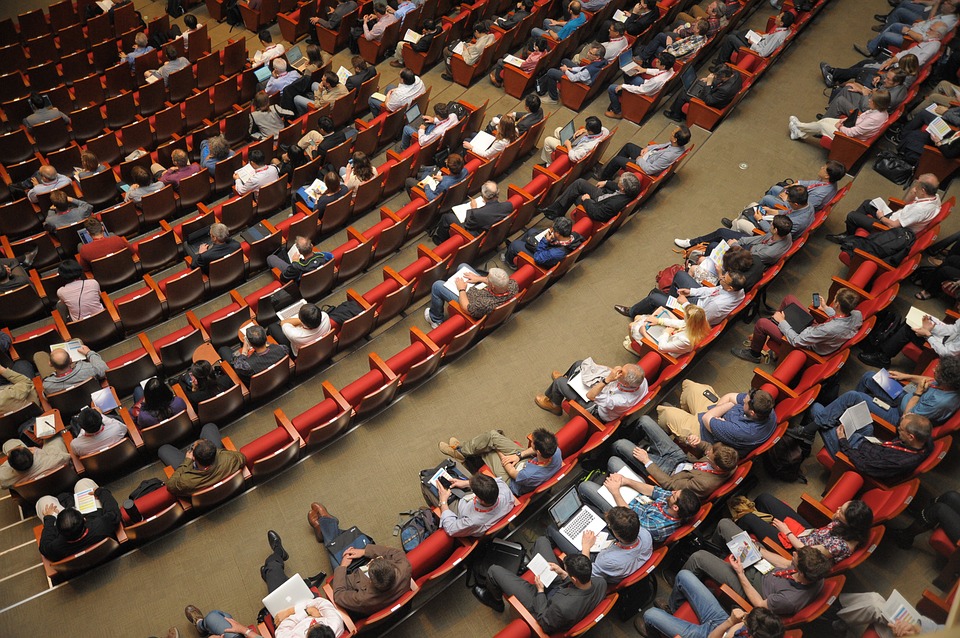
That depends on the system you’re using and whether the paper has been published. And in the case of Chicago referencing, it also depends on the version of the system used.
Author-Date Referencing (In-Text Citations)
The in-text citations for a conference paper are the same whether or not it has been published. This simply requires giving the surname of the author and the year of publication/presentation:
Airflows in urban environments are linked to architecture (West 2010).
The one difference between published and unpublished conference papers is that you should give page numbers when quoting a published paper:
One argument is that ‘tall buildings channel airflows in cities’ (West 2010, 187).
Citing an unpublished paper might sound unusual, but it can be handy if you’ve seen a presentation which hasn’t been published in conference proceedings .
Author-Date Referencing (Reference List)
When using author-date Chicago referencing, all cited conference papers should be included in a reference list at the end of your document. The format to use here for a published paper is:
Surname, First Name. Year of Publication. ‘Title of Paper’. In Title of Published Proceedings , edited by Editor Name(s), page numbers. City of Publication: Publisher.
In practice, this would look something like the following:
West, Kevin. 2010. ‘Understanding Urban Airflows’. In Proceedings of the 10th Annual Conference of Windy Cities , edited by Oliva Winsome, 185-192. Chicago: Chicago University Press.
If the proceedings were only published online, meanwhile, you’d give a DOI or URL in place of the place of publication/publisher.
For an unpublished paper, the format is slightly different:
Surname, First Name. Year of Presentation. ‘Title of Paper’. Presented at Name of Conference, location and date of conference.
Consequently, an unpublished paper would appear in the reference list as follows:
West, Kevin. 2010. ‘Understanding Urban Airflows’. Presented at The 10th Annual Conference of Windy Cities, Illinois, Chicago, October 18-21.
Find this useful?
Subscribe to our newsletter and get writing tips from our editors straight to your inbox.
Note that the name of the conference here is not italicised because it isn’t a published work.
Footnote Referencing (Footnote Citations)
With published conference papers, Chicago footnote referencing treats them as chapters in an edited book . As such, the first footnote citation for a paper would use the following format:
n. Author’s Name, ‘Paper Title’, in Title of Proceedings , ed. Editor Name(s) (Place of Publication: Publisher, Year), page number(s) for cited section.
You can then shorten non-consecutive citations of the same paper to just the author’s surname, paper title and page numbers:
1. Kevin West, ‘Understanding Urban Airflows’, in Proceedings of the 10th Annual Conference of Windy Cities , ed. Oliva Winsome (Chicago: Chicago University Press, 2010), 190. 2. Shirley Church, Landscape and Architecture (New York: Penguin Books), 288. 3. West, ‘Understanding Urban Airflows’, 191-192.
For unpublished papers, the format to use is:
n. Author’s Name, ‘Paper Title’ (paper presented at Name of Conference, location and date of conference).
This would therefore appear as follows:
1. Kevin West, ‘Understanding Urban Airflows’ (paper presented at The 10th Annual Conference of Windy Cities, Illinois, Chicago, October 18-21, 2010).
Similar to published papers, you can shorten non-consecutive repeat citations to just the author’s surname and the title of the paper.
Footnote Referencing (Bibliography)
The formats in the bibliography for conference papers with footnote referencing are similar to those above, but with a few differences in the punctuation and position of the year.
A published conference paper would therefore appear in the bibliography as follows:
West, Kevin. ‘Understanding Urban Airflows’. In Proceedings of the 10th Annual Conference of Windy Cities , edited by Oliva Winsome, 185-192. Chicago: Chicago University Press, 2010.
Meanwhile, you would list an unpublished version of the same paper as:
West, Kevin. ‘Understanding Urban Airflows’. Paper presented at The 10th Annual Conference of Windy Cities, Illinois, Chicago, October 18-21, 2010.
Share this article:
Post A New Comment
Get help from a language expert. Try our proofreading services for free.
The benefits of using an online proofreading service.
Proofreading is important to ensure your writing is clear and concise for your readers. Whether...
2-minute read
6 Online AI Presentation Maker Tools
Creating presentations can be time-consuming and frustrating. Trying to construct a visually appealing and informative...
What Is Market Research?
No matter your industry, conducting market research helps you keep up to date with shifting...
8 Press Release Distribution Services for Your Business
In a world where you need to stand out, press releases are key to being...
3-minute read
How to Get a Patent
In the United States, the US Patent and Trademarks Office issues patents. In the United...
The 5 Best Ecommerce Website Design Tools
A visually appealing and user-friendly website is essential for success in today’s competitive ecommerce landscape....

Make sure your writing is the best it can be with our expert English proofreading and editing.

IMAGES
VIDEO
COMMENTS
General Guidelines for Public and Unpublished Materials. Notes and bibliographic entries for public documents, like other documents, should include the elements needed to locate the items. These essential elements often include the following: Country, city, state, province, county, etc. Legislative body, executive department, court, bureau ...
Citation sentences alone are an acceptable form of citation, so long as the document has only a few legal citations (for more information, see The Chicago Manual of Style, 17th ed., sections 14.269-305 and 15.58.) Court Decisions and Cases. Notes for court cases should include Case Name (formatted as Name of one party v.
Titles of unpublished manuscripts, like the titles of other unpublished works, appear in quotation marks. Include the words unpublished manuscript and the date of the version consulted, if known; for electronic files, a last-saved or last-modified date may be appropriate. End the citation with an indication of format.
This guide will show you how to create notes-bibliography style citations for theses and dissertations in a variety of formats using the 17th edition of the Chicago Manual of Style. Guide Overview. Citing a thesis or dissertation from a database; Citing a thesis or dissertation from the web; Citing an unpublished thesis or dissertation
A Manual for Writers of Research Papers, Theses, and Dissertations (Turabian 9th ed.) by Kate L. Turabian et al. Call Number: ONLINE and LB2369 .T8 2018. ISBN: 9780226430577. Publication Date: 2018. ... Chicago-Style Citation Quick Guide: Author-Date (ch 15)
Unpublished Manuscripts and Papers. 1. Unpublished Document in a Manuscript Collection. References List Format: Include the document author (last name first), the document date (when available) followed by a description of the document including the collection name, the depository name and the depository location. Peterkin, Julia. 1930.
Find it. Write it. Cite it. The Chicago Manual of Style Online is the venerable, time-tested guide to style, usage, and grammar in an accessible online format. ¶ It is the indispensable reference for writers, editors, proofreaders, indexers, copywriters, designers, and publishers, informing the editorial canon with sound, definitive advice. ¶ Over 1.5 million copies sold!
First, any such work that is organized into sections will be cited by said sections, rather than by page number, like the classical works above: N: 16. The Chicago Manual of Style (Chicago: The University of Chicago Press, 2017), 14.232. Works organized into entries, such as dictionaries, will be cited by entry.
If the paper has been published in the conference proceedings, treat it like the chapter of a book; if it was published in a journal, treat it as a journal article. 1. Author First Name Last Name, "Title of the Paper" (paper presentation, Name of Conference, Location of Conference, Month Day, Year of conference). Last name, First name.
Chicago Manual of Style (CMOS) 14.221: Full identification of most unpublished material usually requires giving the title and date of the item, series title (if applicable), name of the collection, and name of the depository. Except for placing the cited item first [in a note], there is no general agreement on the sequence of the remaining ...
Theses & Dissertations. CMS 14.224: Theses and dissertations. Titles of unpublished works appear in "quotation marks"—not in italics. This treatment extends to theses and dissertations, which are otherwise cited like books. The kind of thesis, the academic institution, and the date follow the title. Like the publication data of a book, these ...
Citing Your Sources Using Chicago Style for Papers, Rev. 9/11/2018 - p. 6 Interview - unpublished There are slight differences between how to cite an interview that has been published versus an unpublished interview that you conduct yourself. If the interview was part of a focus group in which the participants must remain anonymous, there is
A. Students would cite their own work as if they were referring to themselves in the third person—or as someone else would cite them. Assuming these previous papers or essays are unpublished, follow the format for citing an unpublished manuscript (see CMOS 14.216 ). For example, Smith, Jamelle. "Bartleby's Refusal as Gen X Flex.".
A. Any paper with a date and place of publication may follow the usual citation format: author (or organization), title, place, publisher, date. If CMOS doesn't have an example of your specific type of paper, find something similar and model your citation on it (perhaps at paragraph 14.178 or 14.179 ). A published title of a stand-alone ...
Full Note - use the first time that you cite a source. Concise Note - use after the first time you cite a source. Bibliography - use when you are compiling the Bibliography that appears at the end of your paper. Information on citing and several of the examples were drawn from The Chicago Manual of Style (17th ed.).
If you want to re-use portions of a paper you wrote for a previous assignment or course, you need to take care to avoid self-plagiarism. The APA Manual (7th edition, p. 21) defines self-plagiarism as "the act of presenting one's own previously published work as original." This includes entire papers, and also slightly altered work.
My paper is in MLA format. Answer. According to the Purdue Online Writing Lab you cite an unpublished paper or manuscript in the following format: Author. Title of Manuscript/Document. date of composition (at least year), along with "the name and location of the library, research institution, or personal collection housing the material."
In Chicago referencing, always give full publication information in the first footnote citation. For a published conference paper, this includes: n. Author's Name, "Paper Title," in Title of Proceedings, ed. Editor Name (s) (Place of Publication: Publisher, Year), page number (s) for cited section. In practice, then, the first citation of ...
And a subsequent in-text citation will look like: The proposal requested new and increased salaries for theatre staff (BBTC 2014). 8. Citing Two or More Sources in the Same Parenthesis Format, Two or More Sources by Same Author: When you are citing two or more works by the same author in one parenthetical note, list the name of the
A works-cited-list entry for an unpublished student paper should include the author, title of the paper (in quotation marks), and date. The name of the course, the institution for which the paper was prepared, and the type of work can be provided as optional information at the end of the entry: Leland, Dina. "Designing websites with Preschool ...
Citation Structure: Note: 1. Interviewee First name Last name, "Interview Title," interview by Interviewer First name Last name, Publication or Channel/Show Name, Month day, year, URL (if online) or page number (if in print). Bibliography: Interviewee Last name, First name. "Interview Title.".
For unpublished papers, the format to use is: n. Author's Name, 'Paper Title' (paper presented at Name of Conference, location and date of conference). This would therefore appear as follows: 1. Kevin West, 'Understanding Urban Airflows' (paper presented at The 10th Annual Conference of Windy Cities, Illinois, Chicago, October 18-21 ...
Manuscripts that are not in the formal publication process (e.g., that have been submitted but not yet accepted for publication) and other unpublished work are cited parenthetically in the text or explained in a footnote. Unpublished work should be identified as a manuscript, a letter, an e-mail, a personal conversation, or "unpublished data."